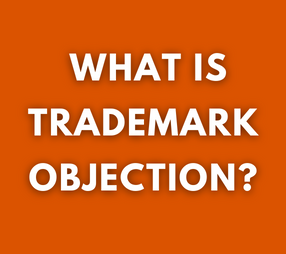Introduction
Trademarks as we know today, is a kind of intellectual property which has subsisted since ancient times. Back in the day, when trade flourished between India and Iran, the Indian craftsmen inscribed their signature on their arty creations. This signifies the level of understanding and knowledge people had back then, even without modern education and technology, they understood importance of protecting one’s intellectual property. In today’s world, the field of intellectual property is growing more than ever, especially the market of trademarks, with more people realizing is importance and benefits in terms of commercial activities and increased competition.
So basically, a trademark is “a sign that individualizes the goods of a given enterprise and distinguishes them from the goods of its competitors.” It simplifies the process of identification of products and services offered by various competitors in the market. The most important attribute of a trademark is that it should be distinctive in nature and not deceptive.
Typically, a trademark consists of designs, words, phrases, letters, slogans, numerals, symbols, surnames, etc., for instance, Ford is named after Henry Ford. Moreover, generic terms such as pen, cupcake, fan and software cannot be trademarked because such terms are used to identify the type of good or service, meaning they are not exclusive in nature. Contrary to this, there are certain names which are generic but still have been granted trademark protection, and one such brand is ‘Apple’. The reason behind granting such protection is that it has been granted under the classification of software technology and not foods which the term is generally related to and such marks are known as arbitrary or fanciful marks.
Trademark Registration
The process of registering a trademark is a lengthy one, involving several steps.
- Trademark Search: It is a basic yet an intricate search to confirm and verify if your business logo is similar to any other pre-existing registered trademark in that particular class.
- Trademark Application: Based on the trademark search results and provided that your logo is found to be unique, a trademark application (Form TM) has to be drafted and filed either online or offline at the Trademarks Office.
- Application Examination: Once the trademark application is filed, a mandatory examination, in accordance with the guidelines of the Trademarks Act, 2016 is carried out by a competent examiner and a report is issued on the same within a period of 30 days of filing the application.
- Post-Examination: After filing a reply to the examination report, the examiner, if still not satisfied or if the objections are not met, may call for a hearing.
- Advertisement of the Trademark: After acceptance of the application, the said trademark is advertised and published in the Trade Marks Journal for a period of 4 months. This is done to invite opposition if any from the general public.
- Opposition from General Public: Post the advertisement and publication, any aggrieved person can file a notice vide Form TM-O within 4 months of such publication, to oppose against the said registration.
- Registration of the Trademark: Finally, after all the objections are met, the application is forwarded for registration. After successful registration, the trademark is valid for 10 years, after which it has to be renewed for the next 10 years, within a specified time period.
Trademark Objection
Trademark objection is among the essential components of the process of trademark registration. An objection arises when either the examiner or the general public or a third-party opposes the registration of a certain trademark. Such objection does not imply straightforward rejection, but asks for a legitimate explanation regarding the mark and registration.
The applicant is granted a fair opportunity to present his case and justify how the said trademark corresponds to the set criteria in order to avail valid registration. In case of an objection, an all-inclusive reply needs to be filed within a month from the date of issuance of the objection. It is of utmost importance that the reply is convincing, otherwise the chances of rejection are high. The reply to such an objection has be filed within four months and the grounds for objection should be clearly stated.
A notice will be served to the applicant, informing him about the objection and the grounds of opposition therein. The application status will be termed as “Opposed” and in case of a registered trademark, the same will be termed as “Objected” in the Indian Trademark Registry
Reasons for Objection
A trademark application must be flawless, without any faults and incorrect information. In case there is any false information such as, incorrect applicant name, incorrect address, etc., then in all probability such an application would receive objection. The grounds for refusal might either be absolute or relative in nature.
There might be various reasons for raising a trademark objection, but the most significant reasons for an objection are, false or inadequate information in the application and existence of a similar trademark. Other reasons include:
Deceptive Marks: Any trademark, that in all probability might confuse the consumers is known as a deceptive mark. Such a mark cannot be registered as a trademark as it violated the main characteristic of a trademark, i.e., the mark should be distinctive and not deceptive. Such an objection can be overcome by filing Form TM-16.
Any mark that can raise a doubt among the consumers pertaining to its source, cannot get registration if a similar mark is already existing
Lacks Distinctive Character: Trademarks have to be unique and the consumer should be able to differentiate between two brands. If they are similar, they can be deceptive in nature and hence can get an objection under absolute grounds for refusal of trademarks.
Similar trademark: In case there exists similar or same trademarks of different trademark owners on records regarding the same or similar description of goods or services, then an objection can be raised.
Specification of goods: If the description or specification of the goods is incorrect or ambiguous or incorporates various goods, then an objection can be raised by the trademark registrar. For instance, “The specification of goods mentioned in respect of class xx is very vague and wide. You should provide exact items in respect of which the trademark is sought to be registered by filing a request on form TM-16.”
Incorrect address: If the application does not specify the correct principal place of business, it is very likely to attract objection. For instance, “The Principal place of business of the applicant should be brought on record by filing a request on form TM-16.”
Incorrect name: The applicant must submit the correct and full name in the trademark application. In case the name is incorrect then an objection would be raised in the following manner, “The application appears to have been filed in the name of a partnership firm, names of all partners of the firm should be brought on record by filing a request form TM-16.”
Incorrect trademark form: An objection in all probability will be raised if the application is filed under the incorrect form. For instance, “The application is made on Form TM-1, for certification mark in respect of goods or services falling in a class, the form of the application should be corrected as TM-4 by filing a request on form TM-16.”
Offensive: If the mark contains any offensive or obscene images or words, then it might face objection.
Formality requirements: The application might face objection, if the applicant does not adhere to the requirements or conditions that are looked-for by the officer. For instance, “the trademark applicant has called for the consent of a person whose portrait appears on the trademark. In that case, the applicant must submit the person’s consent in writing with the supporting documents or state that the picture appearing on the trademark is not of a specific person but is a generic image.”
Trademark Objection Reply Online – Enter slice
All in all, the examiner should be satisfied that the application is in line with all the rules and regulations. If no, an intimation will be sent to the applicant and he is required to respond within a time period of 30 days. If the reply doesn’t fit the set criterion, then the application gets rejected. In such a case, one can always approach the intellectual property appellate board.
The terms objection and opposition are usually used interchangeably, but that is not the case, they aren’t synonymous to one another. The difference between the two is like a fine line, meaning, “an objection is raised by the examiner by raising questions over the criteria that are followed during registration whereas an opposition is raised by a third party over the credibility of the trademark.”
Reply to Examination Report
Once you receive the report, it is of utmost importance to file a written reply, if not your application will be rejected. A comprehensive and meticulous reply has to be drafted, with all the justifications, facts and evidences, stating the mark satisfies all the requisites of being a valid registrable mark. If the examiner is satisfied with the reply filed by the applicant, then the application would be forwarded to be published in the trademark journal for general public to look over and send in opposition if any within a time period of 4 months.
There are a few other factors which have to be considered while filing a reply.
Analysis: Careful study and analysis of the objection is crucial as ambiguity might lead to improper filing of the objection reply.
Drafting: Drafting the reply in the prescribed format is a must, or else it might lead to rejection of the mark. The reply letter should include, “a fitting answer to the objection raised with supporting rule of law, precedents and judgments, the differences between the trademark of the applicant and the mark in conflict if any and other evidences or supporting documents to validate the reply.”
Affidavit: If the trademark is intended to be on the website, social media handles, e-commerce platforms, etc. then an affidavit stating the same has to be submitted along with the reply.
The trademark objection reply letter is then filed online on the Trademark e-filing portal.


No comment